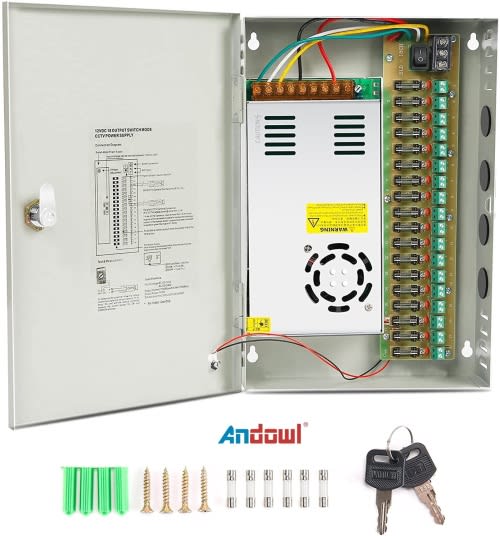
- BOXEE BOX POWER SUPPLY VOLTAGE LICENSE
- BOXEE BOX POWER SUPPLY VOLTAGE PLUS
- BOXEE BOX POWER SUPPLY VOLTAGE TV
By the 1960s, solid-state (transistor and tunnel-diode) models were available. RF preamplifier stages are unknown to these UHF converters the only tubes initially available that would amplify the 400-900 MHz signals were either too noisy to improve the picture, or too expensive. Fancier models included an output "IF" amplifier tube.
BOXEE BOX POWER SUPPLY VOLTAGE PLUS
Oscillator and a 1N82 (or similar) germanium diode mixer being the usual active components, plus a selenium rectifier for power. Here are pictures of many of the over 150 UHF converters I have in my collection. Add-on converter boxes were therefore the common way to get the additional channels for many years. Sets, it wasn't until 1964 that the FCC required UHF capability inĪll new TVs, and 1975 before they had to be as easy to use as the VHF tuners. Set manufacturers were pretty quick to make built-in UHF tuners an (extra-cost) option for their
BOXEE BOX POWER SUPPLY VOLTAGE TV
To receive the new channels, if any were assigned in yourĪrea, you would need a converter for your existing TV set (which of course tuned only 2 through 13). To relieve the crowding that was occurring as commercial television boomed

The FCC had authorized the new TV channels 14 through 83 earlier that year,
BOXEE BOX POWER SUPPLY VOLTAGE LICENSE
The first commercial UHF TV station in the US, Portland Oregon's KPTV, received its license and More have been added since that photo was taken, though!Īlphabetical by brand, with thumbnail photos. Much of my booster collection can be seen here in one photo in their dedicated home. My collection now numbers over 80 models and is probably the most complete assembly of TV signal boosters anywhere, representing an estimated 90% of all models made. It seems that styling of the cabinets was at best a secondary consideration - most of these little boxes are pretty plain. The challenge for the engineers was to come up with a circuit that increased the desired signal without adding noise of its own, and do it for a reasonable price. Universally provided the DC supply voltage. In either a push-pull or cascode circuit, or a 6AK5 low-noise tetrode. The common circuit configurations were either Within easy reception range of at least one TV station, and boosters fell from popularity.Īll the boosters in my collection are tuneable, tube-type units. After 1952, the number of TV stations rose dramatically, so that by the mid to late 1950s, the vast majority of the US population was

Had continuous tuning (rather than click-stop channel selectors), so you could peak up the signal These were tuneable amplifiers for channels 2 through 13 (channel 1 was dropped in mid-1948) installed between the antenna and the TV set. People put up big rotatable antennas to capture the weak signalsįrom 50 or 100 miles away and augmented the tuners in their TV sets with signal boosters. Until 1952 there were only about 100 TV stations in the entire US. Philadelphia, Chicago, Los Angeles, or one of the other major population centers, TV reception In the late '40s and early '50s, unless you lived in or near New York City,


 0 kommentar(er)
0 kommentar(er)
